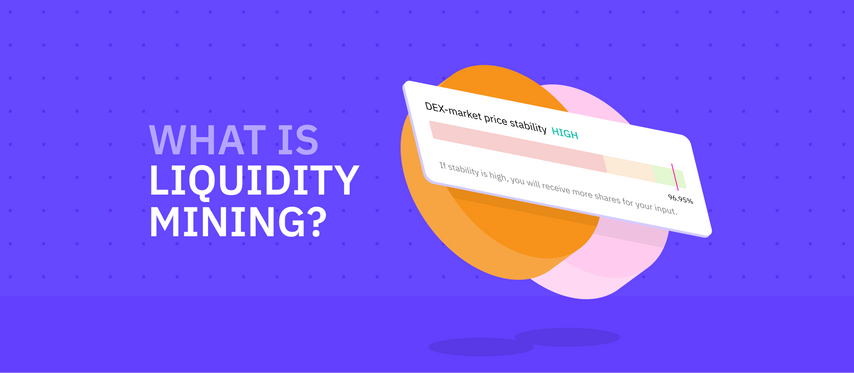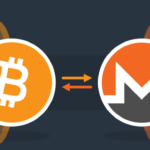DeFi is decentralized finance that is becoming more and more popular. Investors use them to diversify their portfolios and generate passive income. One of the most popular ways to make money on DeFi is liquidity mining.
How it works
Firstly, let’s define what liquidity mining is. Liquidity mining refers to the process by which users provide tokens to liquidity pools of DeFi platforms in exchange for a reward. Decentralized protocols use these tokens to process transactions, and users are rewarded based on the size of their investment. During the trading process, the ratio of assets in the pool changes, and their price changes accordingly.
AMM is an automated market maker that is used on DeFi platforms. It uses a mathematical formula to calculate the price of assets. An ETH to MATIC exchange transaction can be completed without the participation of another trader, as users interact with a smart contract that provides liquidity to the pool. This smart contract is created and managed by users who contributed tokens to the pool.
Advantages and disadvantages of liquidity mining
There are no universal and risk-free ways to earn money. Among the advantages of liquidity mining, it is worth noting the possibility of obtaining high profitability from owning cryptocurrency, which on some platforms can reach three-digit values.
However, it is worth remembering that high returns are always associated with the same high risk. Another plus is that the process gives investors the opportunity to get acquainted with new tokens, which may increase their value in the future. Liquidity mining encourages users to contribute to the growth and development of DeFi protocols and the crypto market in general
However, liquidity mining also has disadvantages that need to be considered. The most significant is the potential risk of impermanent loss, which occurs when the price of deposited tokens falls. The larger this change, the greater the fickle loss, and when you withdraw funds, you will receive less than you invested.
Another disadvantage of liquidity mining is the complexity of the process. To create a pool, monitor it and manage it, you will need specific knowledge. At first, this will take a lot of time and passive income will not be as passive as it seemed.
Top 5 liquidity mining platforms
Uniswap
Uniswap is a decentralized protocol that allows you to exchange tokens without intermediaries. Launched in November 2018, this platform was one of the first decentralized exchanges to gain significant popularity in the DeFi space. Uniswap runs on the Ethereum blockchain and uses AMM to price assets.
Each Uniswap liquidity pool contains two tokens. These pools track aggregate reserves and pricing strategies that are set by liquidity providers. Reserves and prices are updated automatically after each trade.
Sushi Swap
SushiSwap was created as a result of looking for ways to improve on the original Uniswap model by introducing additional features. This platform is a fork of Uniswap, but features a governance token and incentives for liquidity providers. In addition, the possibility of lending and investing in cryptofarming has been added.
Curve
Curve is a decentralized exchange that specializes exclusively in stablecoins. This allows you to create more stable trading pairs and reduce the risk of price fluctuations. Directly converting SAND to MATIC will not work here, but for such cases there is LetsExchange. The unique algorithm of the platform is the anchoring curve, which allows you to make more efficient transactions with less slippage. Liquidity providers on Curve are rewarded in the form of CRV tokens.
Balancer
Balancer is a decentralized portfolio manager and protocol that allows users to create and trade custom baskets of tokens without being centrally controlled. It was launched in March 2020 and is designed to provide more flexibility and customization for traders and liquidity providers. Balancer uses an automated market maker mechanism to price tokens and allows you to create customized liquidity pools.
1inch
1inch is a decentralized exchange aggregator that helps users find the best prices to trade across multiple DEXs. It was launched in 2019 and has quickly become one of the most popular solutions in the DeFi space. On the platform, liquidity providers are rewarded in 1INCH tokens.
As a result, liquidity mining allows investors to passively earn cryptocurrency and receive high income, which significantly exceeds the interest on deposits. However, this tool is not without risks to consider when providing tokens to a pool. Any activity related to cryptocurrencies is accompanied by a high risk. Do not neglect the platform check, the study of the user agreement








